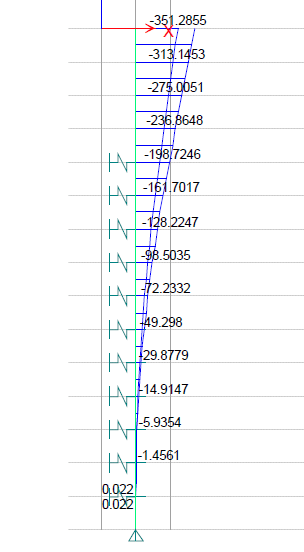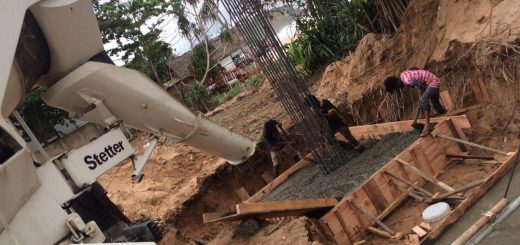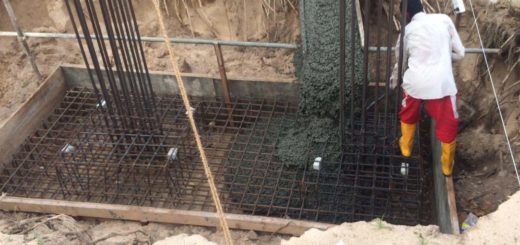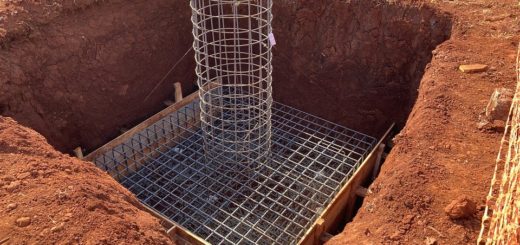Pile Design [Things to be Remembered]
The design of the pile foundation is done based on more uncertainties which cause due to the lack of information on the condition of the ground and rock.
Though we are doing a borehole investigation knowing the condition of the ground, the accuracy of those test and the degree of testing done to interpret the borehole investigation data are not sufficient most of the time.
For example, it is observed that the mostly the classification of soil made in borehole investigation is based on the visual observation made during the investigation at the site.
It is not the correct method to classify the soil. We need to do the necessary tests in the lab to classify the soil.
Likewise, there are key factors that we shall keep in mind when designing pile foundations.
Let’s discuss them.
Axial Response of Piles
In the event of an earthquake, foundations are subjected to two axial responses. However, most of the time, most of the designers are concentrated on the lateral response of the pile.
The axial response of the piles is mostly disregarded as does in the superstructure design.
- Lateral movement and the settlement of the ground could cause by an earthquake. The settlement in the ground could induce negative skin friction on the piles when the settlement of the ground is greater than the pile settlement.
- The generation of excess pore water pressure due to an earthquake leads to a substantial reduction in the effective stress in the soil. As a result, the lateral effective stress between the soil and the pile will reduce. It causes to decrease the friction between the pile and the soil. If the soil skin friction has been considered for the pile geotechnical capacity, this leads to reducing the factor of safety. This reduction is temporary and with the pore water pressure dissipation, the pile could largely recover its capacity.
Pile Buckling
Pile buckling could cause when it driven in very soft soils where it can not provide adequate lateral pressure on the pile to limit the lateral deformations.
In addition, the effect liquefaction that causes in an earthquake reduces the lateral stiffness of the soil and it allows to pile to buckle.
The following limits are given in the book Tall Building Foundation Design by Harry G.Poulos
- Limit the ratio of the later load to critical buckling load to about 1/3 to have a safety imaging against buckling.
- Limit the slenderness ratio (SR) of the pile. SR <50 could avoid buckling stability in the buckling zone. SR = L/(I/A)0.5 where L is the effective pile length within the liquefiable layer, I – minimum moment of area, and A – Pile cross-sectional area.
Selection of Type of Pile Foundations
The selection of the type of pile foundation shall be made very carefully at the initial design stage of the project. The suitable type of pile foundation shall be selected based on the superstructure loading, its behavior, condition of the ground, etc.
For example, when selected from driven piles and bored cast-in-situ piles, the condition of ground should be we assessed. If we use driven piles, there should be a hard soil layer to rest the piles.
Similarly, when we construct bored piles, there should be a rock to provide adequate end bearing. However, when the rock is not close to the ground and it is not in reachable range, bored piles are also constructed as friction piles with having adequate end bearing.
Wrong Estimation of Pile Design Capacity
Pile capacity depends on the geotechnical and structural capacity.
In general, the geotechnical capacity of the pile is the critical factor to be considered in the design.
Mostly, if not attended carefully, pile negative skin friction could be avoided. Negative skin friction of the soil makes a significant impact on the geotechnical capacity.
Further, skin friction of the soil shall also be considered very carefully. Skin friction values could be verified with necessary tests before the application of load due to the uncertainty of the capacity developed.
Similarly, capacity estimation of the pile shall be done with much care.4
Effect of Lateral Load to be Considered in Pile Design
Pile is usually designed for the axial loads applied from the superstructure.
We analyze the superstructure as pin supported at ground beam/pile cap level. It leads to improving the superstructure stiffness and reduces the bending moment transfer to the foundations.
Further, if we design the ground beams supported on a knife-edge (pile supports considered as pin supports), it further reduces the moment transfer to the pile foundations.
However, we can not avoid the bending moment generated on the pile due to the lateral loads applied to the foundation system from the superstructure.
Bending moment in the pile will be high at the pile top and it diminishes toward the pile toe. The lateral force applied by the soil reduces the deflection of the pile and it reduces the bending moment.
Therefore, we should design the pile structurally for the bending moments induced by the lateral load by taking into account the effective height of the piles.




